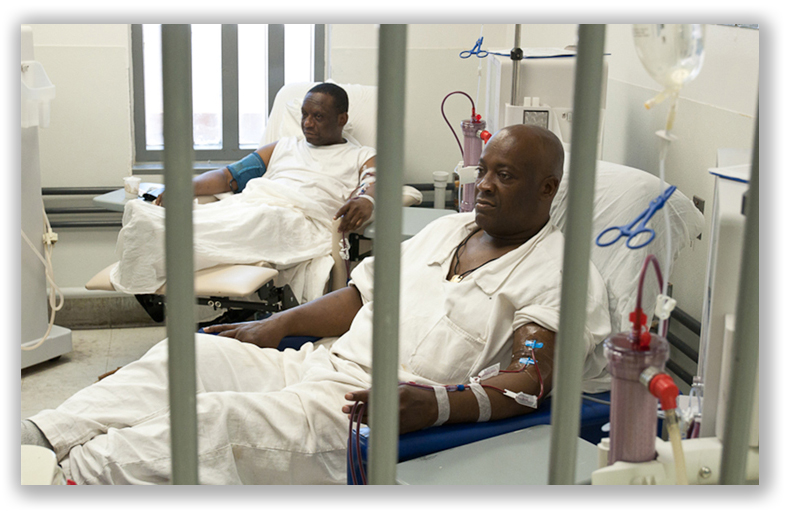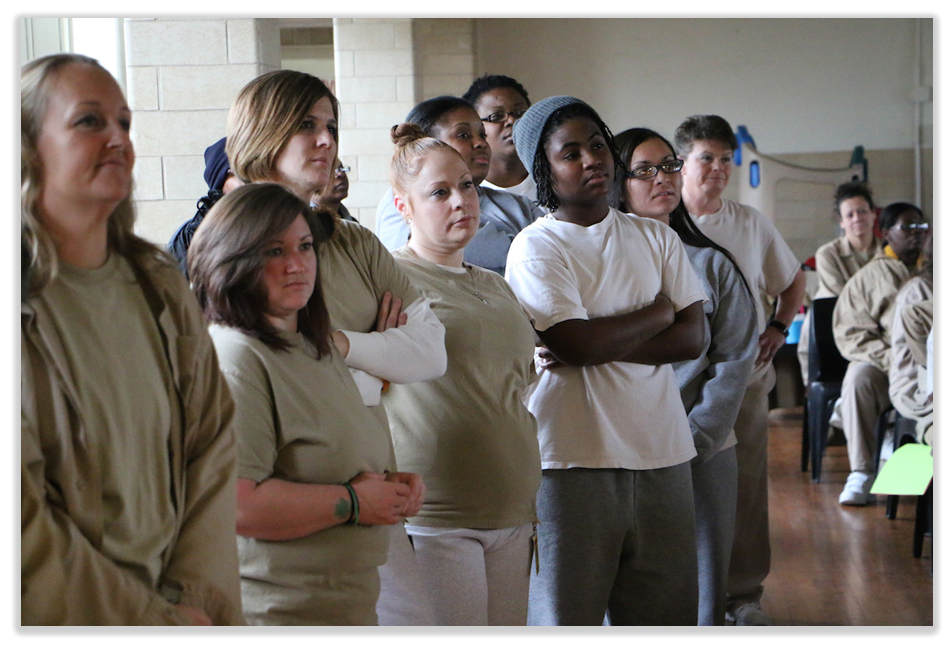We post news and comment on federal criminal justice issues, focused primarily on trial and post-conviction matters, legislative initiatives, and sentencing issues.

UNDER PRESSURE, BOP ROLLS OUT CORONAVIRUS PLAN
As of Sunday night, the novel coronavirus (COVID-19) has sickened over 169,000 people worldwide. More than 6,500 people have died. Confirmed cases in the US exceed 3,750, with over 69 deaths.
 A week ago, the Bureau of Prisons began using a screening tool that includes question about whether inmates or staff members have traveled through any risk countries, had close contact with anyone diagnosed with COVID-19 or been in areas with the virus within two weeks. The tool also assessed possible symptoms, including fever, cough and shortness of breath, the Associated Press reported.
A week ago, the Bureau of Prisons began using a screening tool that includes question about whether inmates or staff members have traveled through any risk countries, had close contact with anyone diagnosed with COVID-19 or been in areas with the virus within two weeks. The tool also assessed possible symptoms, including fever, cough and shortness of breath, the Associated Press reported.
The New York Daily News reported last Monday that the local Federal Defenders organization presented the BOP with “a five-step plan… to handle coronavirus, including a comprehensive testing protocol and requesting that no new inmates be housed at the jails without being tested for the virus first.” The Defenders were focused on the troubled MCC New York – where Jeffrey Epstein died – and MDC Brooklyn, which together hold about 2,300 inmates.
Also on Monday, 15 Democratic senators sent BOP Director Michael Carvajal a letter expressing concern about a possible COVID-19 outbreak in federal prisons. “Over 175,000 individuals are incarcerated in federal prisons and jails, and thousands of incarcerated people, their families and friends, and correctional staff move in and out of federal prisons every day,” according to the March 9 letter. “The unconstrained spread of coronavirus in federal prisons and jails endangers the federal prison population, correctional staff and the general public.”
By Thursday, the BOP addressed mounting concern from lawmakers, union officials and criminal justice advocacy groups that federal prisons aren’t equipped to manage a spread of coronavirus in the prison population. Rep. Jerrold Nadler (D-New York), chairman of the House Judiciary Committee, added to the pile-on with a letter to Attorney General William Barr that demanded answers on BOP preparedness for the inevitable spread of COVID-19 to federal facilities. Nadler said he was “especially concerned because the incarcerated and justice-involved populations contain a number of groups that may be particularly vulnerable to COVID-19. In particular, health conditions that make respiratory diseases more dangerous are far more common in the incarcerated population than in the general U.S. population.”
The BOP told the largest federal correction officers union during a meeting on Thursday that it was poised to announce major steps to deal with the challenge. Joe Rojas, a regional union official, said, “The Justice Department needs to be proactive instead of reactive.” Rojas said there have already been scares in BOP facilities in Seattle and Miami.
Then, the BOP announced Friday afternoon that it was canceling visitation for 30 days, curtailing legal visits, suspending inmate transfers, and suspending use of volunteers and non-essential contractors. Additionally, the Bureau said it will modify “operations to maximize social distancing and limit group gatherings in our facilities. For example, depending on the facility’s population and physical layout, the institution may implement staggered meal times, recreation, etc. These modifications will be reevaluated in 30 days.”
Nevertheless, union officials and inmate advocates warn that the combination of chronic understaffing, a new leave policy and the realities of coronavirus quarantines could lead to the first nationwide federal prison lockdown since 1995. Aaron McGlothin, head of the local union at FCI Mendota in California, said, “You’ve got to understand we’re in a prison — there’s nowhere to go,” he stressed. “If somebody comes down sick, what are you going to do? Everybody’s going to get sick.”
Union officials are also questioning a BOP leave policy issued in an internal memo last Monday. The policy says staff who contract the coronavirus and have symptoms must use sick leave to self-quarantine. The memo said it follows guidance from Office of Personnel Management, which advises the federal government workforce on leave policies. Union officials, however, complain the policy discourages those who have the virus from staying out as long as necessary.
BOP prison employees receive about 13 days of sick leave a year. But the Centers for Disease Control and Prevention recommends 14 days of isolation for those who only have been exposed and says those who are sick should remain quarantined until medically cleared, which could be much longer.
 That means most BOP employees would have to borrow time they had not yet accrued if they do get sick. And even then, it might not cover the full time needed to get better and no longer be contagious. “I wouldn’t want to give them any excuse or reason to come back in before they’re ready,” said Rick Heldreth, the local union president at FCI Hazelton. That’s in contrast to BOP guidance for those who have potentially come in contact with the virus but have no symptoms: They are allowed to use administrative “weather and safety” leave for up to 14 days.
That means most BOP employees would have to borrow time they had not yet accrued if they do get sick. And even then, it might not cover the full time needed to get better and no longer be contagious. “I wouldn’t want to give them any excuse or reason to come back in before they’re ready,” said Rick Heldreth, the local union president at FCI Hazelton. That’s in contrast to BOP guidance for those who have potentially come in contact with the virus but have no symptoms: They are allowed to use administrative “weather and safety” leave for up to 14 days.
“Everybody is saying, what the hell does this mean? If you have the symptoms? If you don’t have the symptoms?” said Rojas. “It’s just a mess.”
Conditions could deteriorate to a lockdown or mass outbreak situation, Rojas said. It’s been more than 24 years since the entire BOP was locked down. At that time, inmates were fed in their rooms and all recreational activities were canceled following a series of prison unrest incidents in 1995.
Kaiser Health News, Coronavirus Puts Prisons in Tight Spot Amid Staff Shortages, Threats of Lockdown (Mar. 13)
Newsweek, Coronavirus Could Cause ‘Public Health Catastrophe’ in Overcrowded Jails Warns Prison Reform Group The Sentencing Project (Mar. 11)
AP, US prisons, jails on alert for spread of coronavirus (Mar. 7)
Bloomberg Quint, Prisons’ Coronavirus Risk Puts Justice Department Under Pressure (Mar. 13)
BOP, Federal Bureau of Prisons COVID-19 Action Plan (Mar. 13)
– Thomas L. Root














 Unfortunately, the hyper-technical circuit policy that lets a defendant argue for hours against imposition of a
Unfortunately, the hyper-technical circuit policy that lets a defendant argue for hours against imposition of a 




